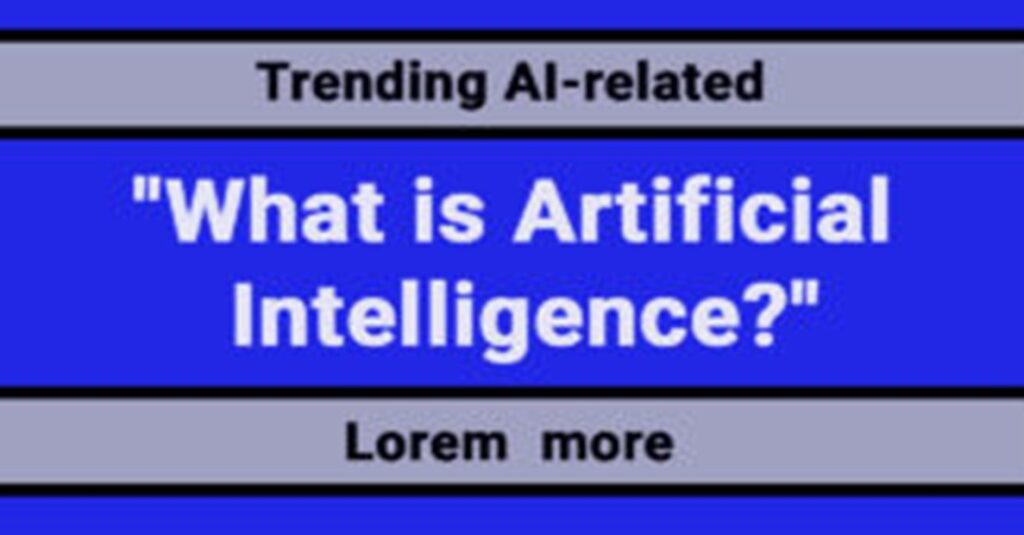What Is AI — How Does AI Work (For Beginners) — Step-by-Step Guide
Introduction
Artificial Intelligence (AI) is a way for machines to perform tasks that normally require human intelligence — things like understanding language, recognizing images, making decisions, or predicting future events. Rather than being one single technology, AI is a toolbox of methods and models that learn from data and improve over time.
Below you’ll find a clear, beginner-friendly explanation of how AI works, a simple step-by-step process you can follow, and everyday examples to make the ideas stick.

How does AI work? (Short answer for beginners)
At its core, AI learns patterns from examples. You give a computer lots of labeled examples (input → correct output), a model looks for patterns in that data, and then the model uses those patterns to make predictions on new inputs. Think of it as teaching a student with many practice problems — after enough practice, the student starts solving new problems on their own.
How Does AI Work — Step-by-Step (Beginner Friendly)
1. Define the problem
Decide what you want the AI to do. Examples: classify emails as spam or not spam, recognize cats in photos, or translate text.
2. Collect data
Gather examples that show the problem and solution. For email spam detection you need many emails labeled “spam” or “not spam.” Quality and variety matter more than quantity.
3. Prepare the data (preprocessing)
Clean the data by removing errors, normalizing formats, and turning words or images into numbers the model can understand. For text this might mean tokenizing words; for images, resizing and scaling pixel values.
4. Choose a model
Pick an algorithm suited to the task. Simple tasks can use logistic regression or decision trees; complex problems often use neural networks or deep learning models.
5. Train the model
Feed data to the model and let it adjust internal settings (parameters) to minimize mistakes. Training is like practice: the model repeatedly tries, checks errors, and updates itself to improve.
6. Validate and tune
Test the model on unseen data to measure performance. Tune hyperparameters (settings that control learning) to reduce overfitting and improve generalization.
7. Deploy (inference)
Put the trained model into production so it can make predictions on real user data — for example, flagging spam emails in your inbox.
8. Monitor and update
Track how the model performs over time and retrain with new data as needed. Real-world data changes, so models must be refreshed.
Simple Analogy (for beginners)
Imagine teaching a friend to sort fruits. You show many pictures of apples and oranges and tell them which is which. After enough examples, your friend learns patterns (shape, color, texture) and can sort new fruit. That’s essentially how supervised AI learning works.
Common Types of AI (Short overview)
- Supervised Learning: Learns from labeled examples (e.g., spam detection).
- Unsupervised Learning: Finds structure in unlabeled data (e.g., customer segments).
- Reinforcement Learning: Learns by trial and error with rewards (e.g., game-playing agents).
- Deep Learning: Uses multilayer neural networks to handle complex data like images and speech.
Real-World Examples
- Chatbots (like ChatGPT): Generate human-like text by learning from massive text datasets.
- Image recognition: Automatically tags photos (face detection, medical imaging).
- Recommendation systems: Suggest products, videos, or songs based on past behavior.
- Fraud detection: Flags unusual transactions using patterns learned from historical data.
Tips for Beginners Who Want to Learn AI
- Start with the basics: Learn Python and basic statistics.
- Try hands-on tutorials: Work through simple projects (e.g., classify flowers with a small dataset).
- Use prebuilt tools: Libraries like scikit-learn, TensorFlow, or PyTorch simplify model building.
- Experiment and iterate: Small experiments teach more than long theory sessions.
Is AI Magical? (Reality check)
AI can do amazing things, but it isn’t magic. Models only know patterns present in their training data and can make mistakes, especially when given data that’s very different from what they saw before. Human oversight, good data, and ethical use are essential.
Conclusion
What is AI? — A set of methods enabling machines to learn and make decisions.
How does AI work? — By collecting data, training models to detect patterns, and applying those models to new situations.
How does AI work for beginners? — Start small: understand the steps, try simple projects, and build from there.
Following the step-by-step roadmap above will help you grasp AI fundamentals and begin building simple models within weeks.